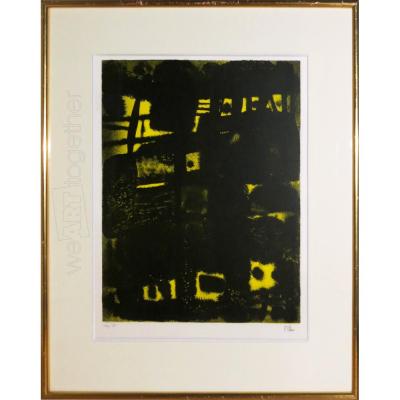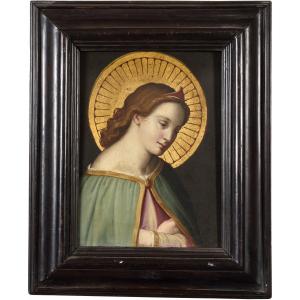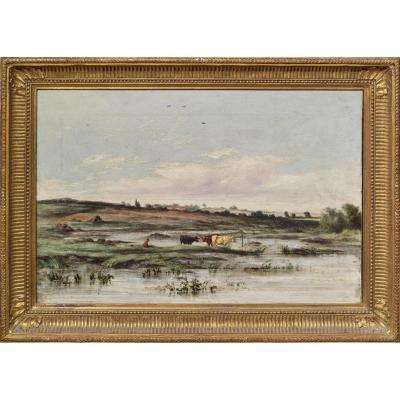"Jun Dobashi, Orange Black And Yellow Abstraction, Watercolor Gouache And India Ink On Paper"
Jun Dobashi was born in Tokyo in 1910 In 1933 he entered the Tokyo School of Fine Arts. Painter and lithographer usually perceived as a Franco-Japanese artist, he spent the first time in Paris (1938 - 1939) where he settled from 1953 to 1969. Very quickly his name will be associated with the Ecole de Paris. He participates in international exhibitions in France, Germany, the United States. His works will be the subject of special exhibitions in Paris in 1954 and 1969. He won the Prix du Dôme in 1956. From 1956 to 1960, Dobashi participated in the Salons d'Automne, and Salon de Mai, before being presented by the Galerie Charpentier in 1960 as representative of the (new) School of Paris. Between 1960 and 1969, his work was regularly exhibited at the Fricker gallery. In 1961, the Redfern Gallery, a London gallery, also exhibited his work. His pictorial identity is defined by Bénézit as being part of a "decorative abstraction, based on the effects of extensive materials and on a staining of bright colors. " The work that we present to you owes a lot in its construction to a major figure of lyrical abstraction, Gérard Schneider, pictorial "flight" less generic in its taxonomy and chronology than "the School of Paris" (first and new), and which experienced its climax in Paris from 1945 to 1956. This influence is particularly noticeable in “Orange, Black and Yellow Abstraction” (circa 1950s).
This watercolor gouache by Jun Dobashi is based on a play of opacity and transparency, strongly inspired by both the traditional art of Japanese calligraphy and the abstract colorist calligraphy work of Gérard Schneider, a major painter in the artistic movement of France. Lyrical abstraction. Enamelled with white and yellow which dilute the opacity (impression accentuated undoubtedly by means of a stencil and sponge work), two large black lines in Indian ink brushed with a roller occupy the central part.
The ensemble composes a sparkling calligraphy that stands out against a background of bright orange watercolor gouache just brightened by four yellow "playing zones" on which the mysterious, abstract, encoded calligraphy rests; an open interpretive horizon where the black lines seem to form an artistic alphabet (O (U) I), a cabalistic of binary digits (extended 0 and 1); unless you choose to see it as the inverted calligram of a horse in shadow ... Japanese. Presented in a modern frame, the artist's signature appears at the bottom right of the composition.
Dimensions: At sight: 19.5 x 15 cm - With the frame: 31 x 26.5 cm






























 Le Magazine de PROANTIC
Le Magazine de PROANTIC TRÉSORS Magazine
TRÉSORS Magazine Rivista Artiquariato
Rivista Artiquariato